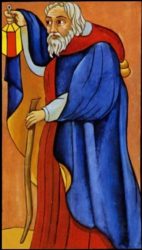Ask, and it will be given you
seek, and you will find;
knock, and it will be opened to you. ~ Luke xi, 9
Hermetism differs from both religion and science, although it does not attempt to replace them. Unlike religion, which accepts things on faith, and unlike science, which is based on facts and theories, Hermetism seeks knowledge. Not knowledge of facts, no matter how mystical, sublime, or luminous, nor knowledge of articles of faith or scientific knowledge, but knowledge of the mysteries, a direct, unmediated, intuitive knowledge.
Hermetism is a way or a path, so it must be traversed. Reading another book or article, or following another guru, will not lead to Hermetic knowledge. Instead, spiritual practice is absolutely essential.
In Letter IV on the Emperor, Valentin Tomberg explains the essential prerequisite of spiritual exercises:
Please click to continue ⇒
